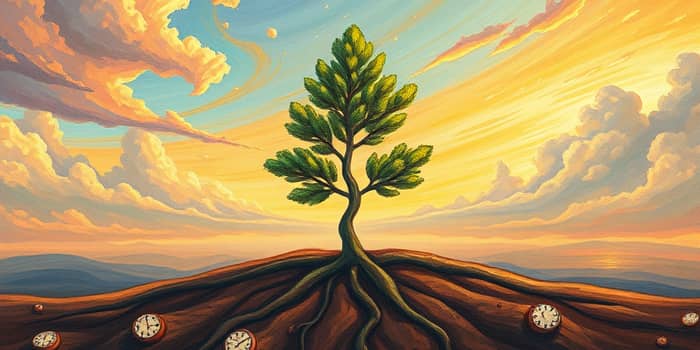
In an era driven by instant results and rapid feedback loops, the ability to step back, endure uncertainty, and plan for the distant horizon has become a rare and priceless skill. Embracing delayed benefits that multiply over time empowers individuals and organizations to achieve sustainable success.
Humans are evolutionarily wired for preferring immediate smaller rewards, a phenomenon known as temporal discounting. Our ancestors survived by seizing fast, reliable gains—food, safety, and shelter—rather than waiting for uncertain future payoffs.
Research shows that for natural selection to favor delayed rewards, those rewards must be significantly larger, especially as the delay increases. Even a slight uncertainty of 50% pushes people to choose an earlier, smaller reward unless the later reward is vastly more appealing.
This bias shapes decisions in retirement saving, diet and exercise habits, and even global policy responses to climate change. Overcoming our biological wiring requires conscious effort and systems designed to reward long-term thinking.
Short-term forecasting addresses immediate needs, spanning hours to a year. It relies on recent, high-frequency data to make agile decisions and respond to market shifts.
In contrast, long-term planning extends beyond a year, sometimes decades. It sacrifices pinpoint accuracy for a broader strategic view, aiming at innovation, sustainability, and growth.
Both approaches are essential, but an overemphasis on quick wins often leads to reactive decision-making and missed long-term opportunities.
Integrating patience into corporate strategy yields sustainable growth and deeper stakeholder trust. Organizations that look beyond the next quarter build resilience against market shocks, foster loyalty, and drive innovation.
Yet, committing to a long-term agenda invites challenges: resource intensity, forecasting uncertainty, and cultural inertia favoring immediate gains. Addressing these hurdles requires clear frameworks and leadership commitment.
Real-world examples illustrate how steadfast vision outpaces short-term tactics:
These successes highlight that patience often delivers exponential returns, both financially and reputationally.
Translating long-term vision into practice involves structured approaches and consistent reinforcement:
Implementing these frameworks requires leadership that champions patience and designs systems to mitigate short-term impulses.
Beyond business, short-term bias undermines critical societal challenges. Climate change mitigation, public health infrastructure, and education reforms demand planning horizons stretching decades.
Political cycles and media attention spans often sideline these priorities, despite clear data on the long-term risks of inaction. Cultivating patience at the societal level necessitates policy reforms, public education, and metrics that value future well-being.
Patience is more than passive waiting; it is an active process of strategic commitment and disciplined execution. Organizations and individuals can nurture this quality by celebrating milestones toward distant goals, sharing success stories, and embedding long-term purpose into daily routines.
By designing decision-making processes that reward foresight, building teams oriented toward sustained impact, and consistently communicating the big-picture vision, patience becomes a defining cultural asset.
In a world hooked on immediacy, choosing to plan decades ahead is a radical act of leadership. The power of patience lies not in waiting, but in relentlessly working toward a vision that transcends transient trends. As you confront the pressures of urgent demands, remember that the deepest roots yield the tallest trees—and the greatest rewards often arrive to those who are willing to endure.
References













